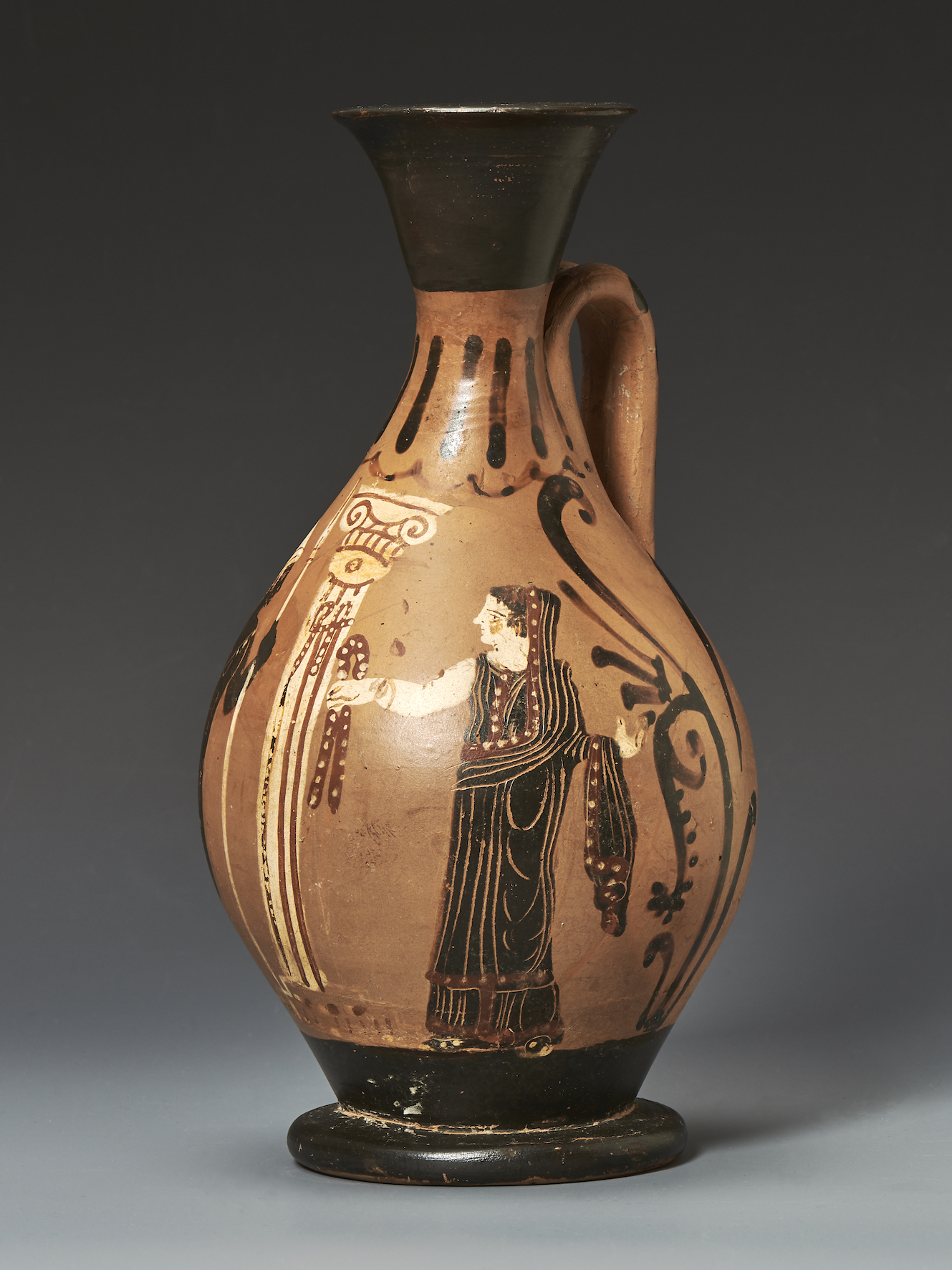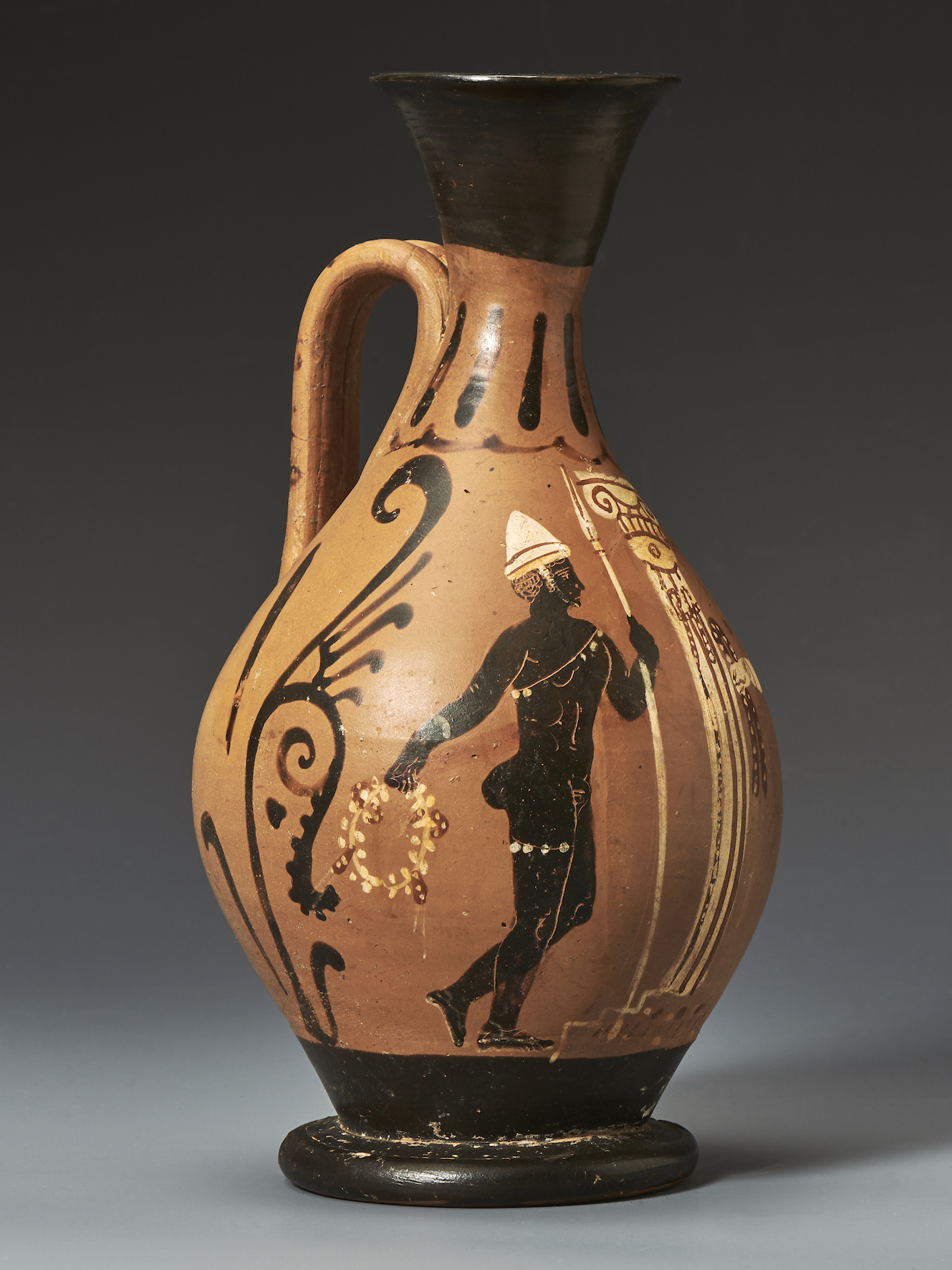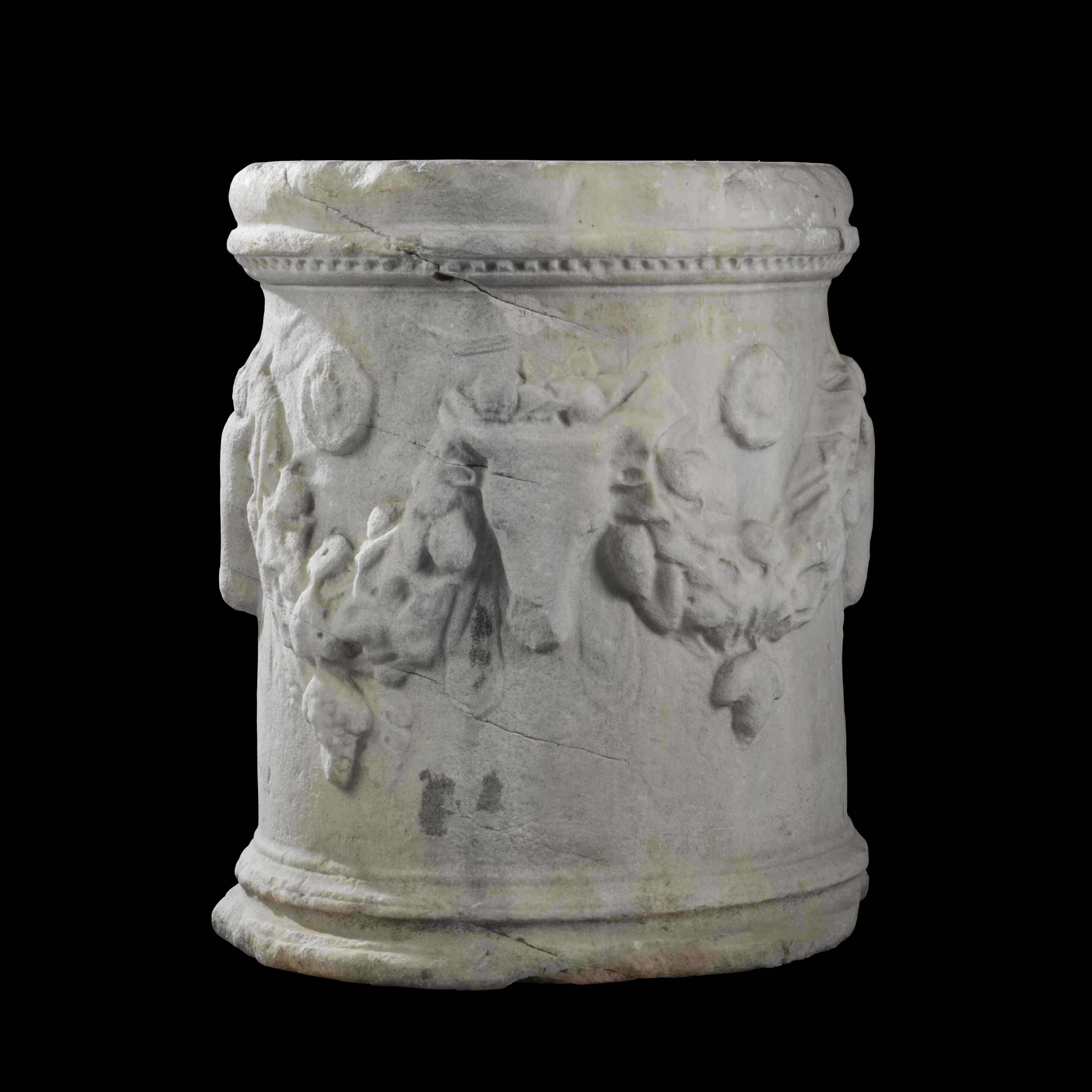The ovoid body of this elegant oil flask is decorated with two standing figures beside a white Ionic column with red detailing. To the left of the column is a naked youth, who leans on a spear and holds a floral circlet in his right hand. He wears a Pilos-type helmet secured with a chin strap and beaded fillets across his body, on his left wrist and around his right thigh. On the right of the column stands a chiton-clad woman, who holds a decorated fillet in her right hand, along with a himation wrapped around her upper body and pulled over her head. Both the fillet and the himation are decorated with white dots. It is, without a doubt, a depiction of the scene from Aeschylus‘s Oresteia of 458 BC, in which Orestes and his sister, Electra, meet at their father Agamemnon’s tomb. The central column represents the burial monument to which Electra comes in order to perform the funeral rites. Orestes, returning from exile, surprises his sister as she lays votive offerings at the base of the monument. The female figure’s left hand is gesturing in surprise at her brother’s appearance while Orestes waits to make his own offering, the circlet of leaves. A symmetrical floral decoration of a large palmette between two volutes occupies the handle area.
Note
This is an exceptionally fine and well-preserved example of a Pagenstecher, a distinctive class of mostly small black-figure lekythoi with characteristically ovoid bodies, tall necks and wide mouths, which were mainly produced in Sicily, Campania and Paestum, as well as a few pieces which were found in Apulia, from c. 370 BC until the end of the 4th century BC. The class is further characterised by the use of superimposed colours, applied directly onto the glazed surface. In this case, black, white and brownish-red colours were used. It takes its name from the scholar who first published an extended list of such lekythoi.
A handwritten letter by A.D. Trendall, La Trobe University, Australia, dated 16.III.1982, accompanies the vase. Trendall dates the lekythos to the 4th century B.C. and attributes it to the Pagenstecher Class. In his letter, he adds that the vase “was not yet exhibited because we are waiting for the construction of a showcase worth such an important piece”, so it seems the lekythos was, at some point, exhibited at the Trobe University.








